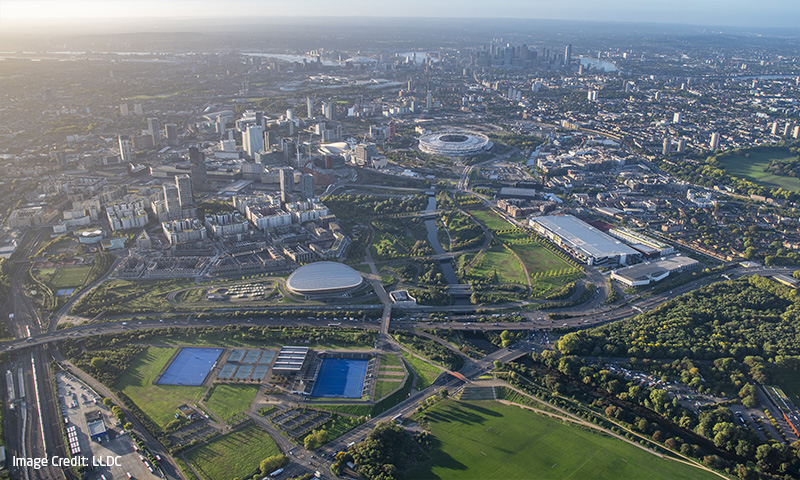THE FUTURE IS GREEN… but have we left it too late to change cityscapes?

Urbanisation over the last 150 years has increased at a rapid rate. This has significantly depleted biodiversity levels as human behaviours have made it difficult for nature to establish itself in urban environments. Opinions on urban biodiversity have shifted recently with research highlighting its importance in halting the ecological crisis. We are now trying to compensate and retrofit cities to accommodate the changes required. A key way to break into the urban fortresses that we have created are via “green corridors” – one of a range of tools being increasingly used by built environment practitioners.
What are green corridors?
In the 1990’s American landscape architect Jack Ahern, outlined Green Corridors or Greenways, as multi-functional networks of land containing linear elements that are: planned, designed and managed for ecological, recreational, cultural, or aesthetic benefit. Compatible with the concept of sustainable land use, their effectiveness comes from the networks that they are trying to build, whether that be land connections or water.
Factors influencing green corridor design:
- Broad reaching development impacts that take both the natural environment and the people that live in the urban environment into account.
- Increased sophistication and understanding of the need to protect environmental values.
- Growing political and economic justification for investing in multi-objective green corridor projects.
Impacts on the local environment
The numerous examples of successful green corridor schemes around the world have shown that the greatest impacts come from the boldest interventions. The London Assembly have recognised the huge potential of green corridors, and have a number of funding schemes. Including grants such as; Green and Resilient Spaces, Rewild London, and Grow Back Greener. From the Greenway Pollinator Trail in Newham to the Royal Docks Grass Routes, green corridors are re-shaping London.
For best effect, developments should always seek to connect the proposed schemes to existing green spaces, helping to create the networks of green corridors across the city. One of the largest and best examples of successful green corridors on our doorstep is Queen Elizabeth Olympic Park in Stratford, London.

Queen Elizabeth Olympic Park
Ten years on from the grand reopening, the development has had a clear environmental impact on the area. A number of nationally scarce and endangered animal species have now been recorded within the park, including the European eel, designated as critically endangered by the International Union for Conservation of Nature.
The park has also become a way of connecting a number of developments together as well as to improved local infrastructure, such as Stratford and Stratford International train station. East Village is one of the key developments that sits adjacent to the park, and as a result locals have gained a vast area of amenity parkland.
Role of Developers and Designers to supplement green corridors
With the new Environment Act imminently entering legislation, developers and designers are being challenged to place more importance on biodiversity, requiring provision of long-lasting design solutions that will have a real impact.
We must think of ways that allow the natural environment to permeate into the city even more so, within a controlled manner that connects with established biodiverse areas. As a key infrastructural design feature of the future, green corridors are a key tool to respond to this new landmark legislation.
Development teams should look to London’s green corridors to help establish the ways they can create economically viable, multi-functional schemes whilst facilitating connections between various habitats. Green corridors look to be the future of urban infrastructure and with the irrefutable evidence that shows the benefits of them so why aren’t more being introduced?

Projects like the Olympic Park are prime examples of how developers are able to combine the social benefits of new housing and comprehensive public spaces. Macfarlane + Associates have made giant steps forward in this area through our land planning and notably our award winning Low Line Commons initiative , where biodiversity is at the heart of the transforming the spaces alongside the Victorian viaducts that run through Bankside, London Bridge and Bermondsey in Southwark, London.